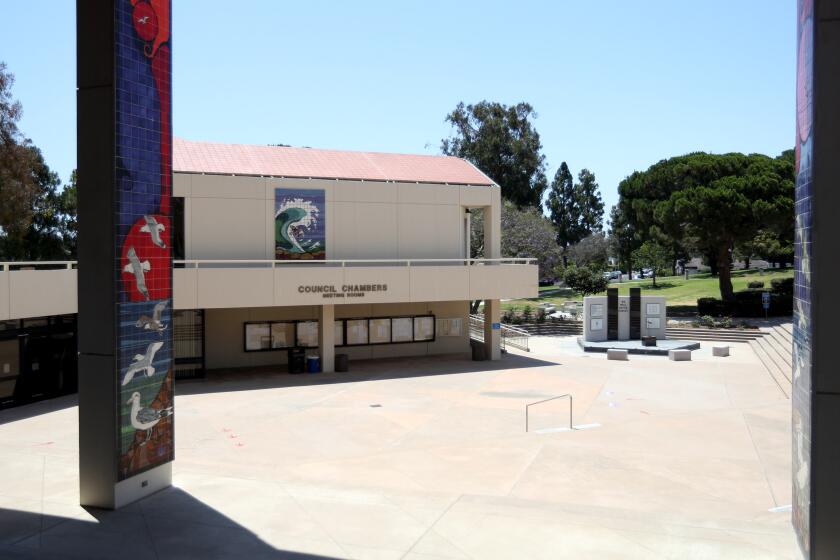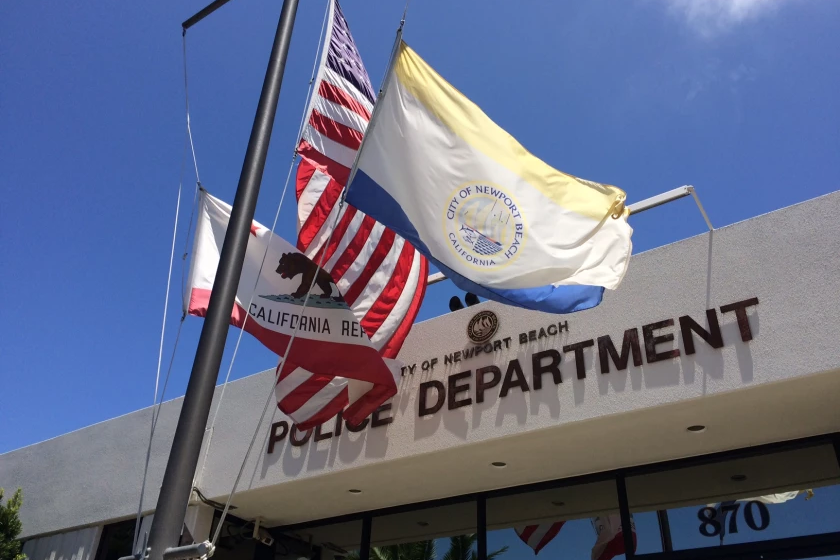Not exactly a three-hour tour
- Share via
A pirate-clad ukulele player and a septuagenarian celestial navigation buff sit down at a dinner table. What do they talk about? How do they pass an entire night together?
It’s almost a rhetorical question given the improbability of this pairing, but about a dozen people now know the answer thanks to a transpacific sailing expedition that recently ended in Newport Beach.
The Alaska Eagle, a 65-foot aluminum sailboat that just returned from a yearlong, 20,000-mile trip to New Zealand and back, was staffed by a motley crew of sailors, and they didn’t just eat one meal together. They ate, slept, breathed and worked together — never more than 20 yards away from each other — for weeks at a time. The majority of crew members for the voyage were not professional sailors or even experts, but they were selected from a pool of applicants based on their personality traits, as well as their sailing abilities. This rigorous process helps ensure there are no major conflicts, said Captain Sheri Crowe, who has piloted the boat along with her husband, Rich, for a quarter century.
Still, a multiweek stint, without sight of land with a group of 12 strangers, is a daunting proposition.
“On day three I was about ready to throw myself overboard,” said David Heaslip, a 43-year-old crew member and Costa Mesa family man who describes himself as an inexperienced sailor.
Heaslip sailed what coordinators called one of the most difficult legs of the journey, from New Zealand to Tahiti, and although it took him some time to become acclimated, he loved the experience.
It served as preparation for a two-year, round-the-world sailing trip he wants to take with his family in the future, but first he wanted to make sure he was prepared to handle all the challenges the ocean could throw at him.
“It’s easy to get a good-weather sailing experience, but if you’re going to go out on a long expedition, you need to know what it’s like to be in bad weather in the middle of the ocean, unreachable,” Heaslip said.
There were no hurricanes or 20-foot seas on his portion of the trip, but he did run into some strong winds and big waves, he said, and the instruction from the captains was invaluable.
Making the trip safe and informative for the crew is not the only duty shared by the captains and trip organizers, though. Getting the group to cooperate and do hard and often unpleasant work together is no small task, and it begins on shore, said Brad Avery, director of the OCC School of Sailing and Seamanship.
“We try to make sure we don’t have anyone on board that mistakes it for a pleasure cruise,” Avery said.
All the members share a passion for sailing, and all tend to be physically fit and well-educated, according to Avery. That doesn’t mean they aren’t eclectic in their tastes, though.
“It’s a crew of people that want to go out and do things that normal crews don’t want to do,” Heaslip said.
Like spending a day on a scarcely populated Pacific island helping put up a telephone pole. That’s what one ebullient crew member, the pirate-clad man mentioned earlier, did while on shore leave, according to Sheri. Another crew member, a Japanese man who spoke English as a second language, brought along his flute.
“When we had barbecues on shore, you would just hear the flute coming in through the trees,” Sheri said.
Plenty of people have already applied for next year’s trip. Applicants, who enroll through OCC, usually pay a few thousand dollars to sail a leg of the voyage.
ALAN BLANK may be reached at (714) 966-4623 or at alan.blank@latimes.com.
All the latest on Orange County from Orange County.
Get our free TimesOC newsletter.
You may occasionally receive promotional content from the Daily Pilot.





